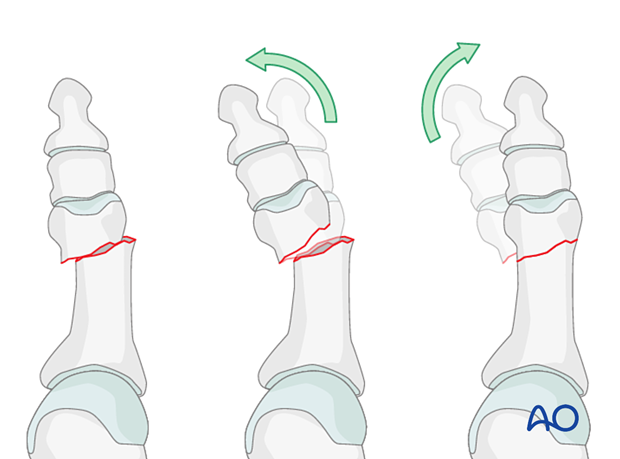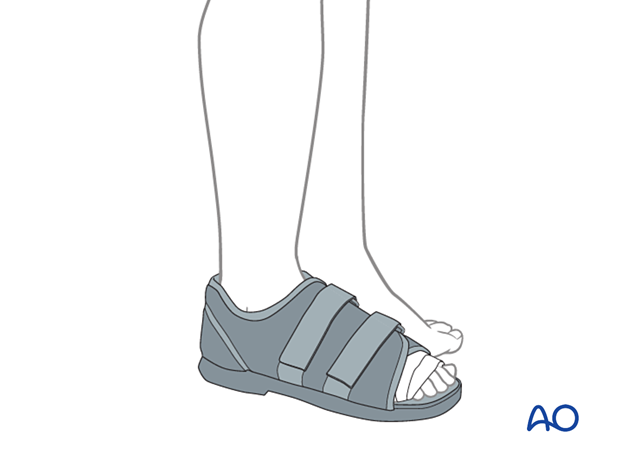Nonoperative treatment
1. Timing of surgery
The timing of surgery is influenced by the soft tissue injury and the patient's physiologic status.
Dislocation or injuries associated with the skin at risk requires immediate intervention regardless of the amount of soft tissue swelling.
Forefoot fractures do not contribute to physiologic instability. If there is no soft tissue at risk, urgent intervention is not required.
2. Closed reduction
The deformity is reduced under local anaesthesia (digital block) by exaggerating the deformity and then applying traction and reversing the mechanism of injury.
If the reduction maneuver leads to an appropriate (anatomic or near anatomic) reduction that does not redisplace, then alignment can be maintained by buddy taping.

3. Buddy taping
The skin is cleaned, and 5–10 mm wide straps are fixed in a loop around the toes. Gauze may be placed between the toes to avoid maceration of the skin.

4. Aftercare
A stiff-soled orthosis, like a flat, rigid sole shoe, is used to protect the reduction and allow healing.
The symptoms usually settle over the first few weeks. The tape should be changed frequently to prevent maceration between the toes. Most patients are capable of doing this themselves.
Taping can be discontinued after 4–5 weeks.














